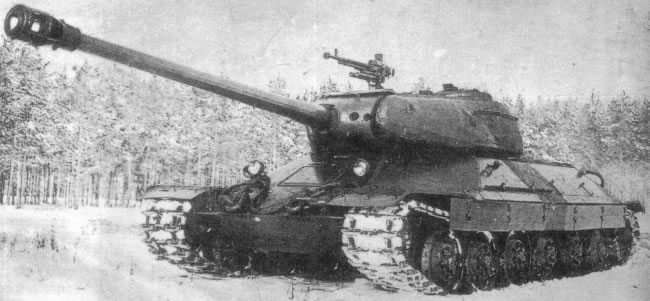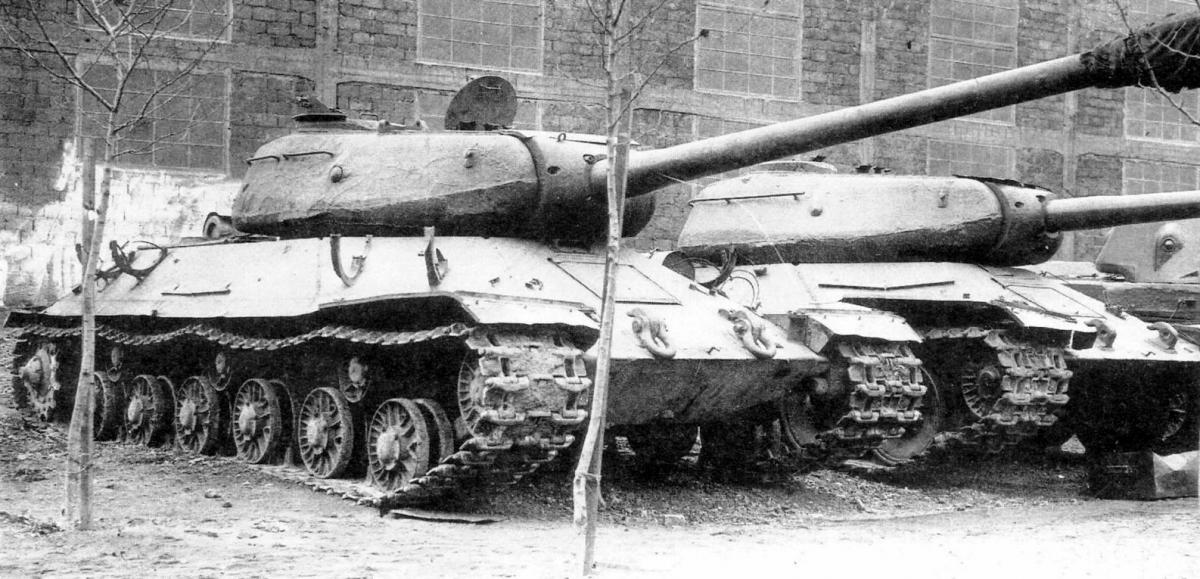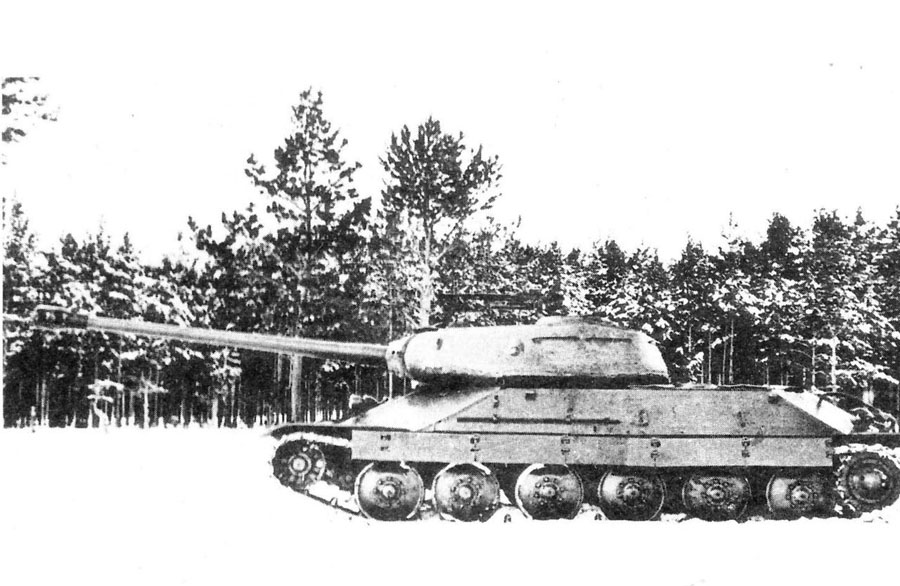able to acquire a few examples of the new generation of German tanks,
most notably the PzKpfw VI Tiger heavy tank (known as the "T-6H Tiger" to the Soviets) and the Panzerjäger Tiger (P) tank destroyer, better known as the Ferdinand (designated the "T-6P Ferdinand" by the Soviets). After studying these vehicles, the OGK NKTP (Otdel Glavnogo Konstruktora Narodniy Kommissariat Tankovoy Promishlennosti
- Main Design Department of the People's Commissariat of Tank
Production) developed a keen interest in some of their new features,
particularly the neutral steering capabilities of the Tiger and the electrical transmission of the Ferdinand.
They were found to make driving the tanks a lot easier, and the OGK
NKTP began considering the possible incorporation of these features into
Soviet tanks.
Between the 13th and 17th of November 1943, the OGK NKTP, along with the VAMM (Voennaya Akademiya Mekhanizatsii i Motorizatsii - Military Academy of Mechanisation and Motorisation) and the NATI (Nauchniy AvtoTraktorniy Institut - Automobile and Tractor Research Institute), began work on further increasing the IS-2 heavy tank's firepower and protection by developing a heavy assault
tank. The project was originally intended to produce a tank with a
rear-mounted superstructure and an electromechanical transmission
similar to that of the Ferdinand, and was led by Deputy Chief of the GBTU (Glavnoye Bronyetankovoye Upravleniye
- Main Tank Directorate) I. Lebedev. Early the next month, the design
bureau of the Experimental Plant No. 100 in Chelyabinsk, under the
leadership of Zhosef Kotin, designer of the KV and IS heavy tanks, began
work on a new heavy tank project. Eventually, two designs for the IS-6 were submitted, both in the "classical" tank configuration.
On 8 June 1944, the NKTP ordered the Experimental Plant No. 100, along with the Uralmashzavod (Ural Machine Plant) to begin design and construction of the two IS-6 designs as the Ob'yekt 252 and Ob'yekt 253
respectively. Preliminary design work had already been completed by the
Experimental Plant No. 100 under A. Yermolayev, and most of the
remaining design work would be the responsibility of Uralmashzavod, as
the ChKZ (Chelyabinsk Kirov Zavod - Chelyabinks Kirov Plant),
with which the Experimental Plant No. 100 was associated, was also
preoccupied with the production of existing tank designs, as well as
with work on the Ob'yekt 701 heavy tank (the prototype of the IS-4).
The Experimental Plant No. 100 would be resposible for construction of
the prototypes, while the Uralmashzavod would be responsible for
assembly and testing of the prototypes.
Strictly speaking, there were two different tanks which received the same designation IS-6: the Ob'yekt 252 and the Ob'yekt 253. The IS-6 featured ingame is the Ob'yekt 252. It was manufactured in October 1944, and can be easily distinguished from the Ob'yekt 253
by the large-diameter roadwheels and lack of track support rollers. The
suspension had previously been tested on the IS-3 experimental heavy
tank (Ob'yekt 244, not to be confused with the IS-3).
It was armed with the 122 mm D-30, an improved version of the 122 mm
D-25T (not to be confused with the later 122 mm 2A18 howitzer, which
also had the name of D-30). The D-30 was equipped with a shell rammer
for increased rate-of-fire, and also had a compressed gas system to
purge the barrel of gun fumes after firing. It was fitted with a 700 hp
V-12U diesel engine and a conventional mechanical transmission, while
the Ob'yekt 253 was fitted with the new electro-mechanical transmission. The Ob'yekt 252 underwent factory testing from 8 to 27 November 1944 before being sent, along with the Ob'yekt 253,
for further testing at the NIIBT (Nauchno-Ispitatyelniy Institut
BronyeTekhnika - Research and Testing Institute for Armoured Vehicles)
testing grounds in Kubinka.
Comparative testing with the Ob'yekt 701 showed that both IS-6
prototypes were broadly equivalent to it in firepower and mobility, but
were inferior in armour protection. Neither IS-6 design was eventually
selected for production; the Ob'yekt 252, with its mechanical transmission, was found to offer no significant advantages over existing heavy tanks, while the Ob'yekt 253's
electrical transmission was found to be too bulky, too unreliable, and
required too much space for the cooling units. The increased weight of
the electrical transmission also reduced the vehicle's maneuverability,
eliminating any advantages in handling the electrical transmission would
have provided. Further development of both IS-6 designs was thus
halted.




